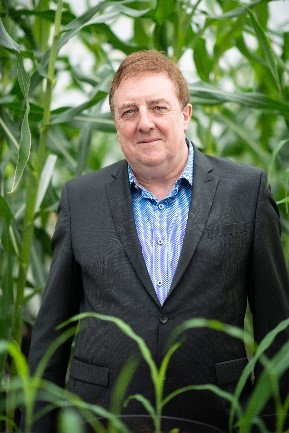Plenary Lectures Winners 2022
Each year at our Annual Meeting, we honour George Parker Bidder and Harold Woolhouse with two key Plenary Lectures. These lectures, along with the Cell Biology Plenary Lecture, are given by scientists prominent in their field and are nominated by the committees of their respective sections.
This year's Plenary Lecturers are:
Bidder Lecture - Patricia Wright
Woolhouse Lecture - Alison Smith
Cell Biology Plenary Lecture - Dirk Inze
Bidder Lecture - Patricia Wright

As a senior undergraduate research student at McMaster University, I worked in the lab of Dr. Chris Wood and conducted experiments on ammonia transport across the gills of rainbow trout. This led me to graduate studies at the University of British Columbia under the supervision of Dr. Dave Randall. There I continued studying gas exchange and ion transport in fish. As a postdoctoral fellow at the University of Ottawa, I worked with Drs. Tom Moon and Steve Perry on glucose metabolism. Later I studied mammalian kidney metabolism at NIH as a postdoctoral fellow working with Dr. Mark Knepper. The research in my lab is now focused on how fish and other aquatic animals cope with environmental challenges, with particular interests in amphibious fishes and early life stages.
Research
Environmental Physiology
Research in my laboratory is focused on osmoregulation and respiration in aquatic animals. I am interested in how animals maintain homeostasis with changes in the external environment. We study the interaction between the animal and its environment from early development to adults in fish and amphibians.
A Fish Out of Water
Amphibious fishes spend part of their life out of water, either daily, seasonally or at a specific life stage. Early work explored the various air breathing organs that amphibious fish use to respire out of water. Much less is know about amphibious fish that respire through the skin. Our work is focused on an unusual amphibious fish that appears to use the skin as the primary respiratory surface when on land. The self-fertilizing, hermaphroditic mangrove rivulus Kryptolebias marmoratus inhabits mangrove forests of the southern US and South/Central America. These tiny fish (~100mg) tolerate a wide range in water temperature, pH, salinity, oxygen, hydrogen sulfide, as well as prolonged air exposure. What strategies do they use to cope with life out of water? We discovered that rivulus excrete gaseous NH3 across the skin during air exposure, a nitrogen excretion strategy similar to terrestrial gastropods and isopods. The skin is also an important site of ion and water exchange in air-exposed rivulus. Gill morphology is reversibly remodelled when the fish move between water and land. But how does gill remodelling impact respiration when rivulus return to water? Why do rivulus leave water (emerse)? Why are some fish able to survive out of water for longer periods than others? These and other questions are currently under investigation in the lab, as well as in the field (Belize).
Early Developmental Plasticity
The early environment surrounding a developing embryo often shapes the adult morphology, physiology and behaviour, in other words the developmental process is plastic. We are interested in how water temperature and/or oxygen levels during critical windows of early zebrafish development alter the long-term thermal and hypoxia tolerance of the adult fish. We are also interested in whether developmental plasticity or adult acclimation both influence thermal preference in eurythermal mangrove rivulus. As well, mangrove rivulus embryos survive and hatch out of water, a possible physiological advantage because air holds ~30x more oxygen than water. We are studying the developmental consequences of early air exposure in mangrove rivulus. These and other projects address the fundamental relationship between genetic and environmental influences on the adult phenotype.
Ammonia Excretion
Although fish generate and excrete ammonia, elevated ammonia in the environment can be a deadly poison. We are studying pathways involved in ammonia detoxification. Brain glutamine synthetase is an important enzyme involved in reducing ammonia levels. Alternative nitrogen excretion pathways may also be effective in reducing the uptake of ammonia and/or eliminating excess tissue ammonia. We are studying a new class of ammonia transporters belonging to the Rh family of proteins. Rh genes are upregulated in the gills, kidney and skin of mangrove rivulus, carp, goldfish and trout in response to environmental stress. Work is underway to understand how these proteins function and if they are involved in ammonia excretion.
Woolhouse Lecture - Alison Smith
Cell Biology Biology Plenary Lecture - Dirk Inze

Dirk Inzé is a global leader in plant biology and an ISI ‘most cited author’. His research ambition is to obtain a holistic understanding of the molecular networks regulating plant organ growth and crop productivity. His work has opened up new perspectives for the identification of optimal growth regulatory networks that can be selected by advanced breeding, or for which more robust variants can be obtained through genetic engineering. As such, Dirk Inzé's work significantly contributes to providing food security for the growing world population.
Dirk Inzé received his PhD at Ghent in 1984. In 1990, he was appointed Research Director of the French National Institute for Agricultural Research (INRA), where he initiated highly successful research programs on the plant cell cycle and growth control. In 1995, he became Professor at Ghent University and he was the scientific founder of the biotechnology company CropDesign, which was established in 1998 and acquired in 2006 by BASF Plant Science. In 2002, Dirk was appointed Director of the Center for Plant Systems Biology of the VIB. Under his directorship, the Center for Plant Systems Biology – currently employing approximately 300 individuals – became one of the world leading centers for advanced plant sciences. Dirk’s research was recognized by numerous awards and he is a member of several science advisory boards. Dirk currently owns, for the second time, an advanced ERC grant and his work received >58,000 citations (H-factor 133). In 2017, Dirk was awarded with the prestigious World Agriculture Prize. In 2019 he was elected to the rank of AAAS Fellow by the American Association for the Advancement of Science (AAAS). And in 2020 he was elected to be a member of Academia Europaea. As of 2021 he also is a member of the ERC scientific council.
